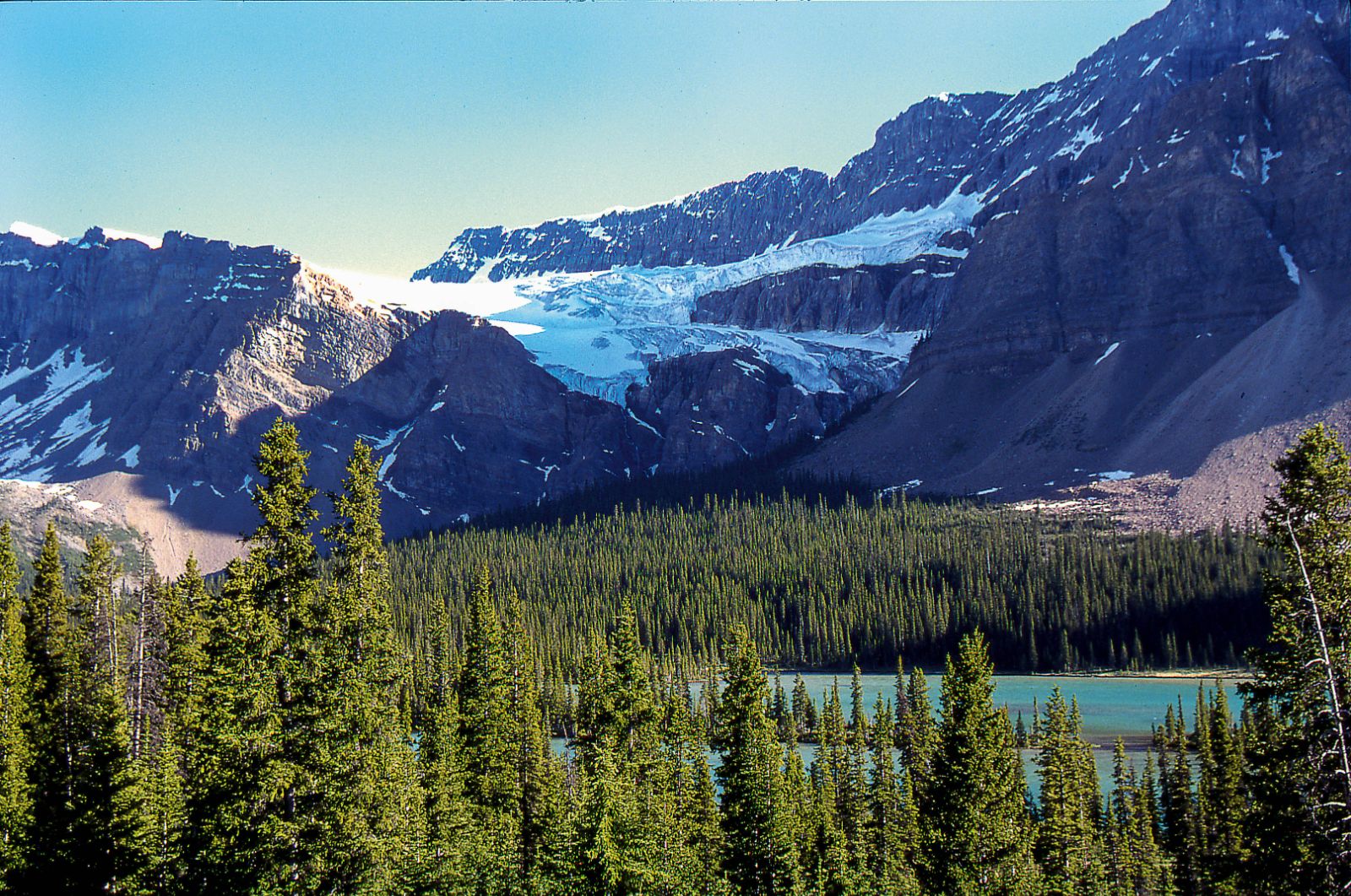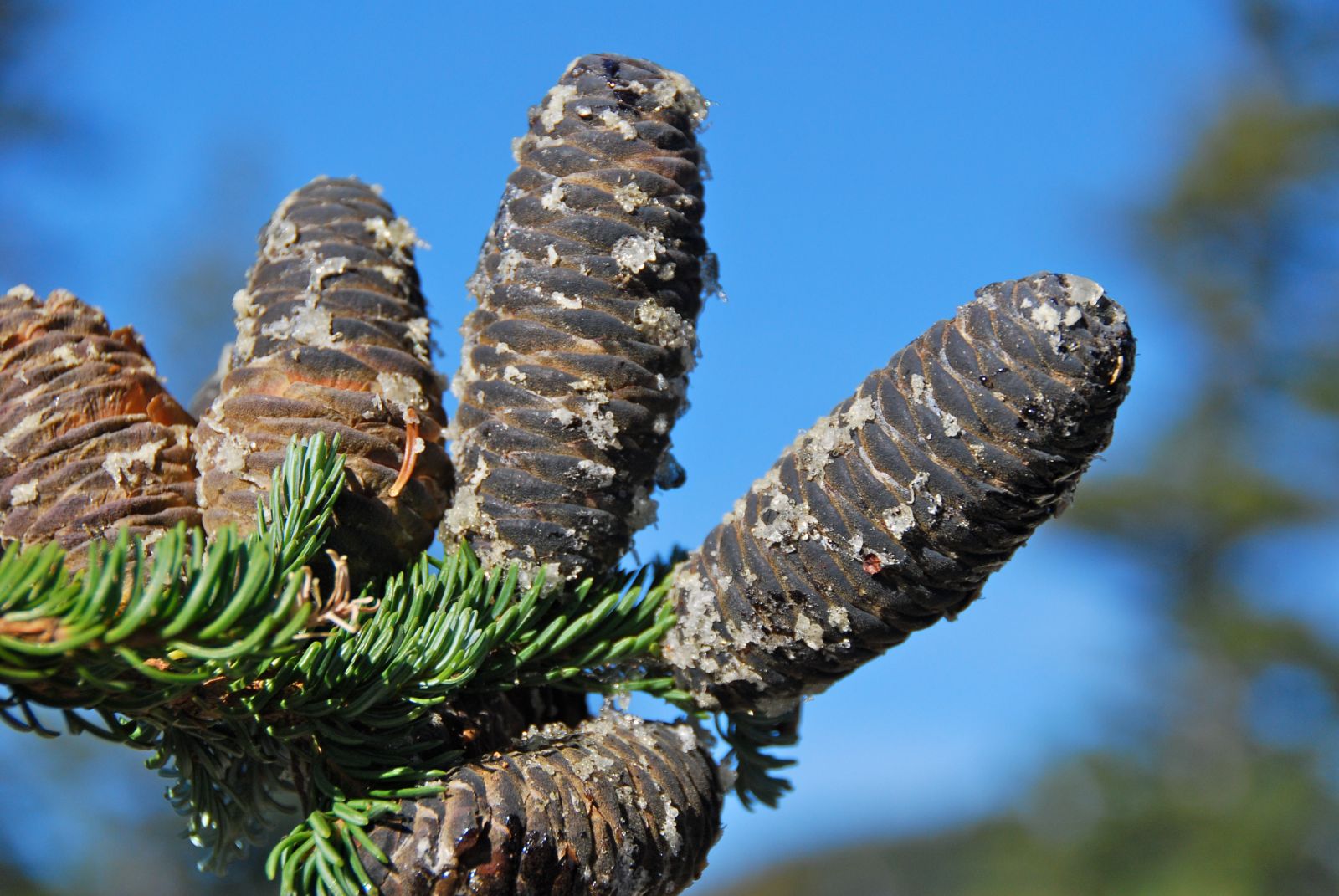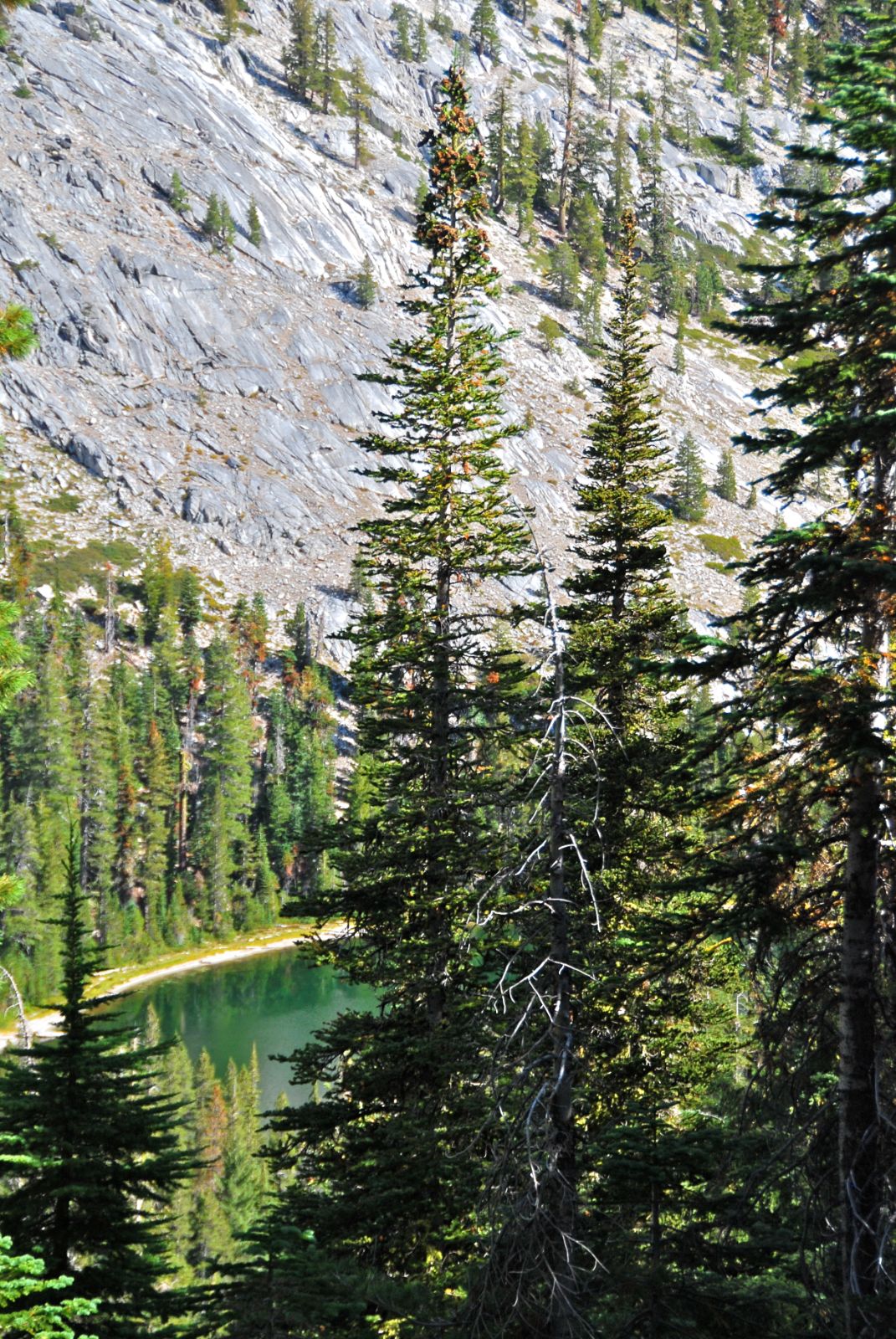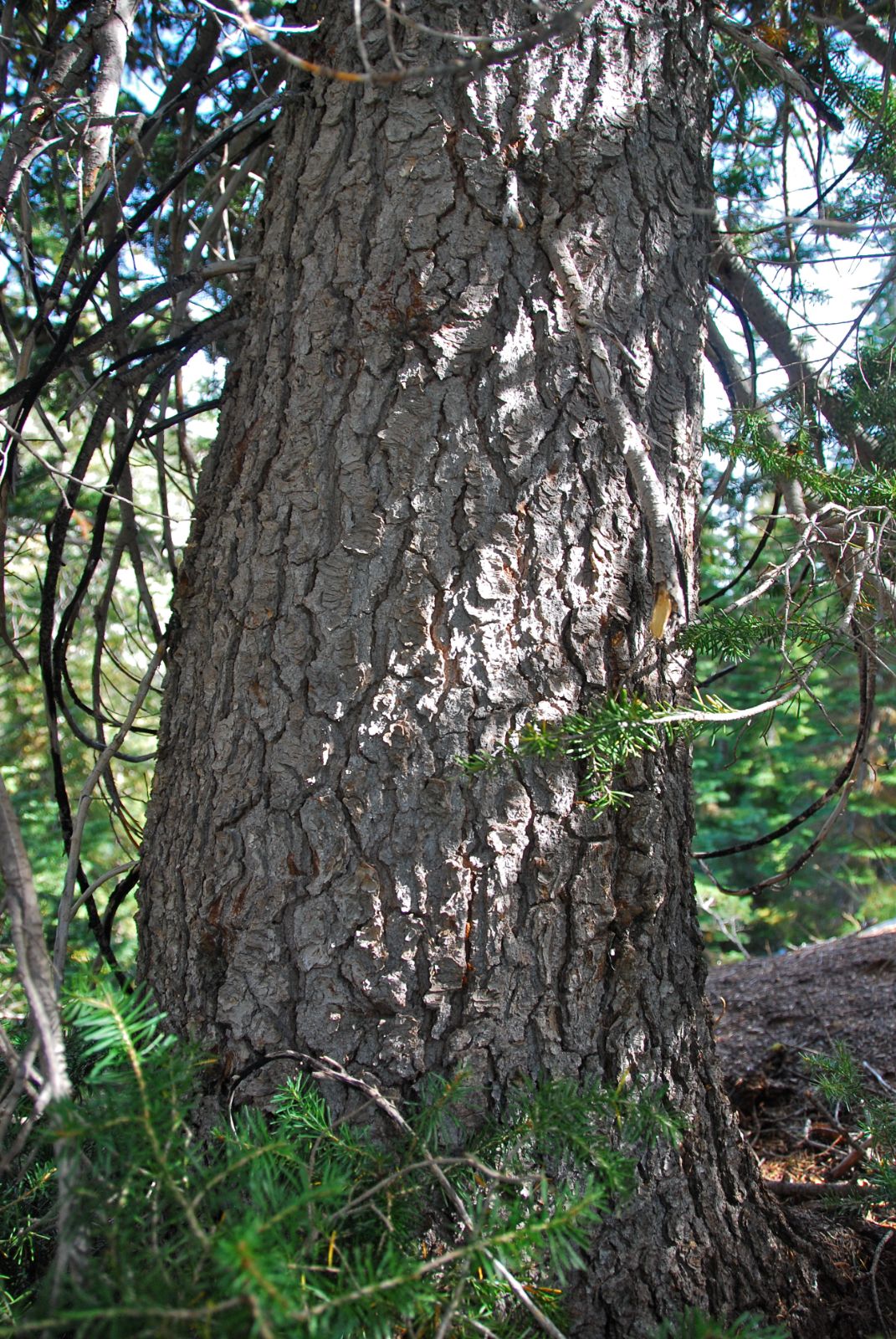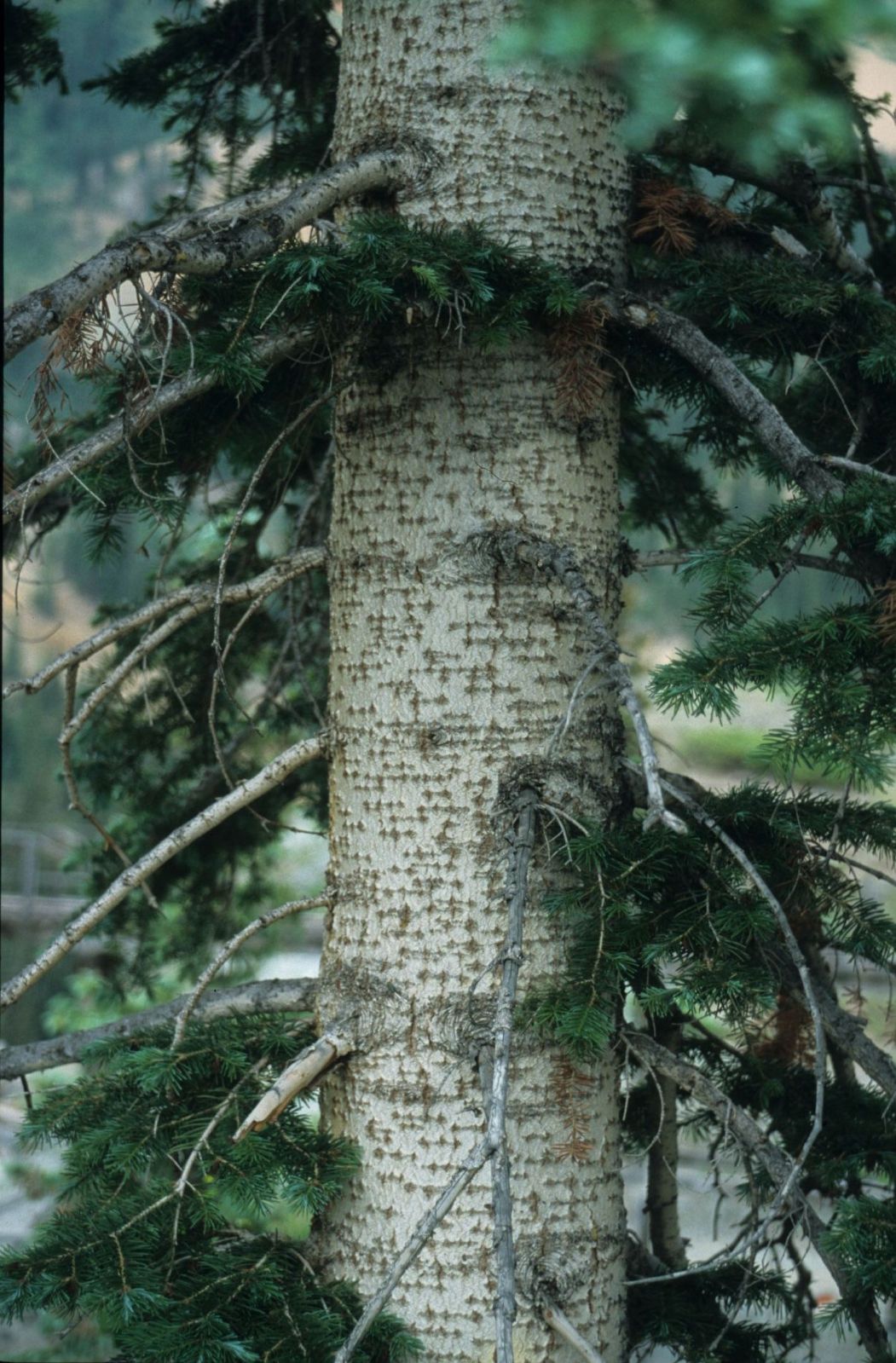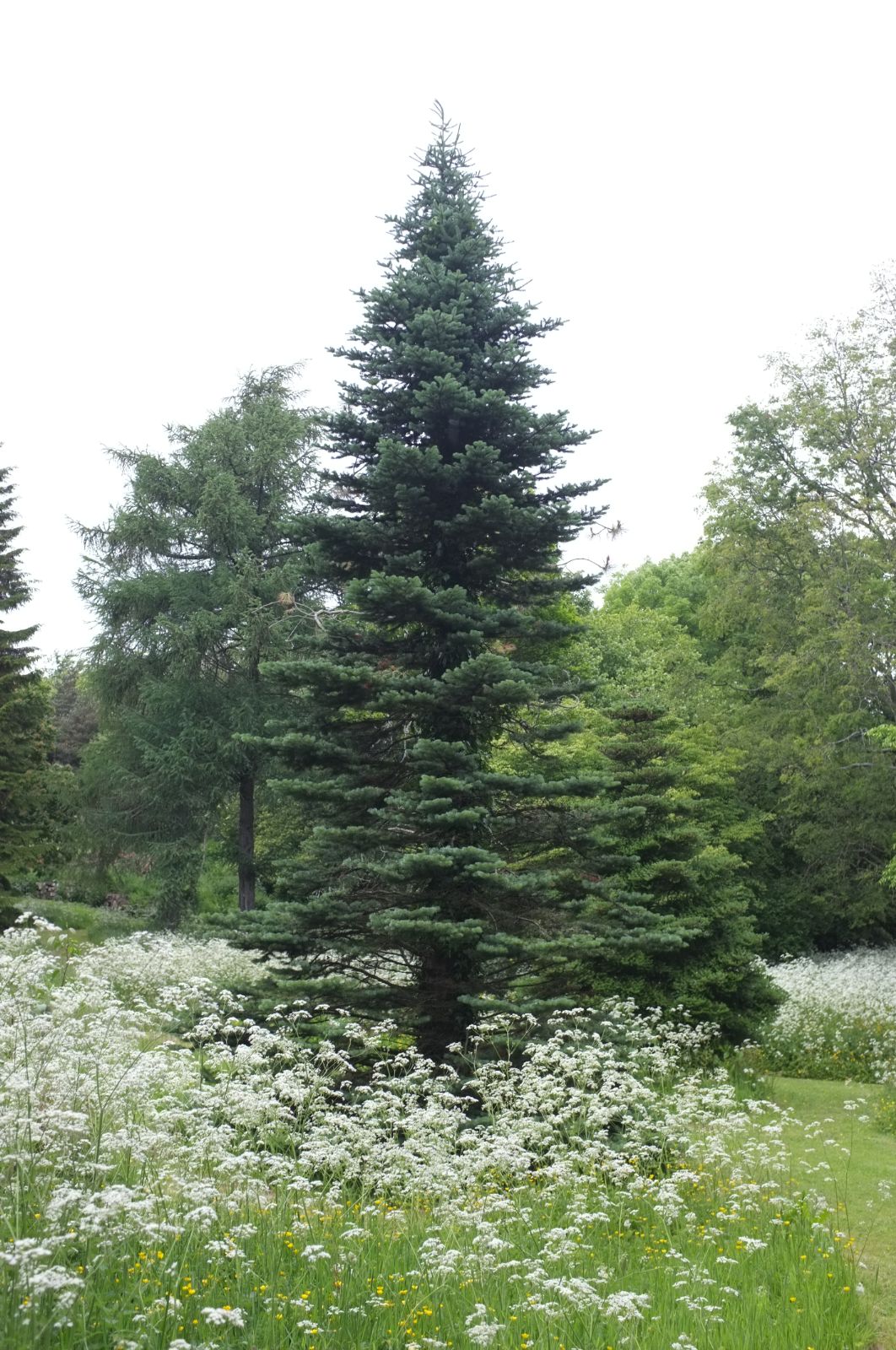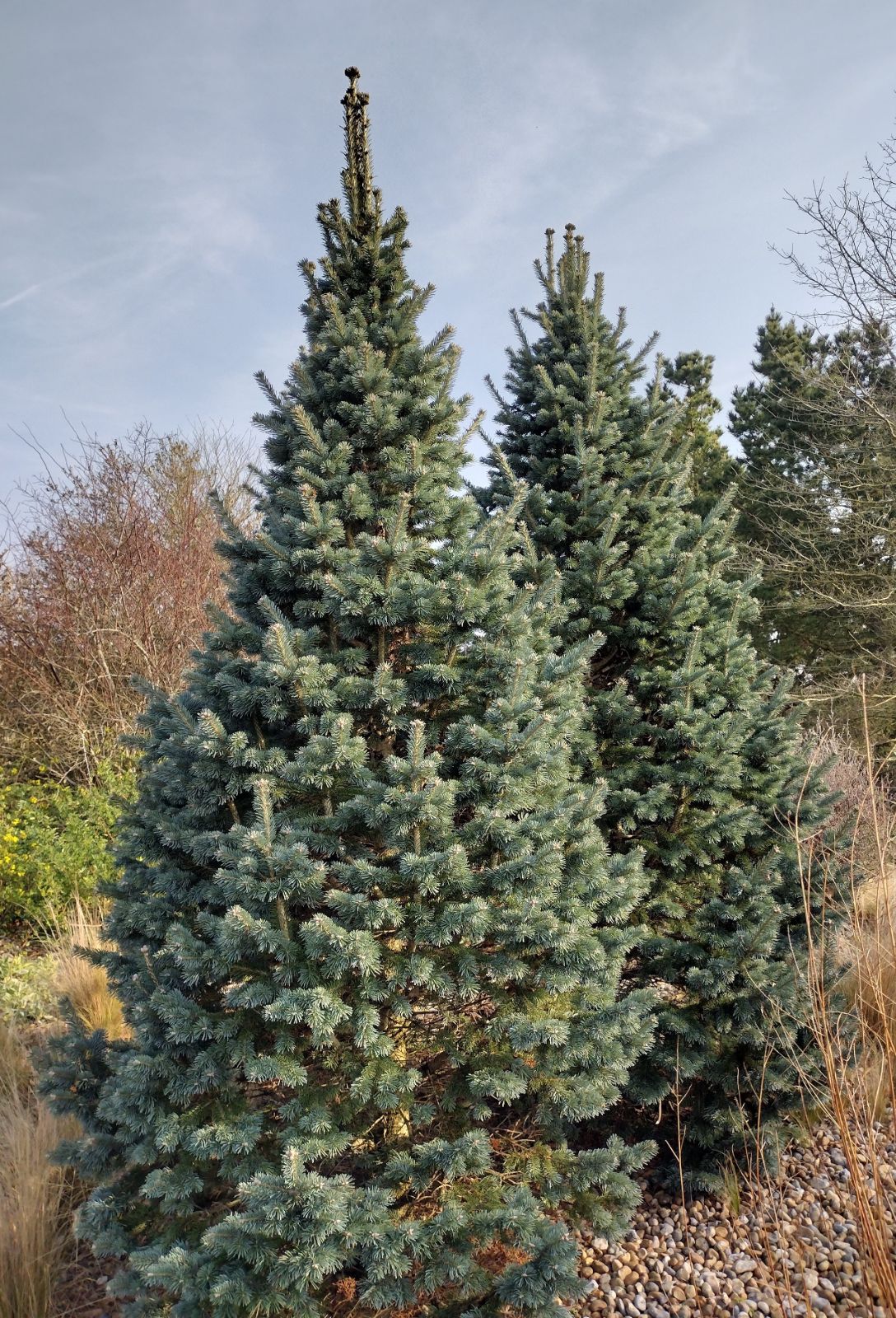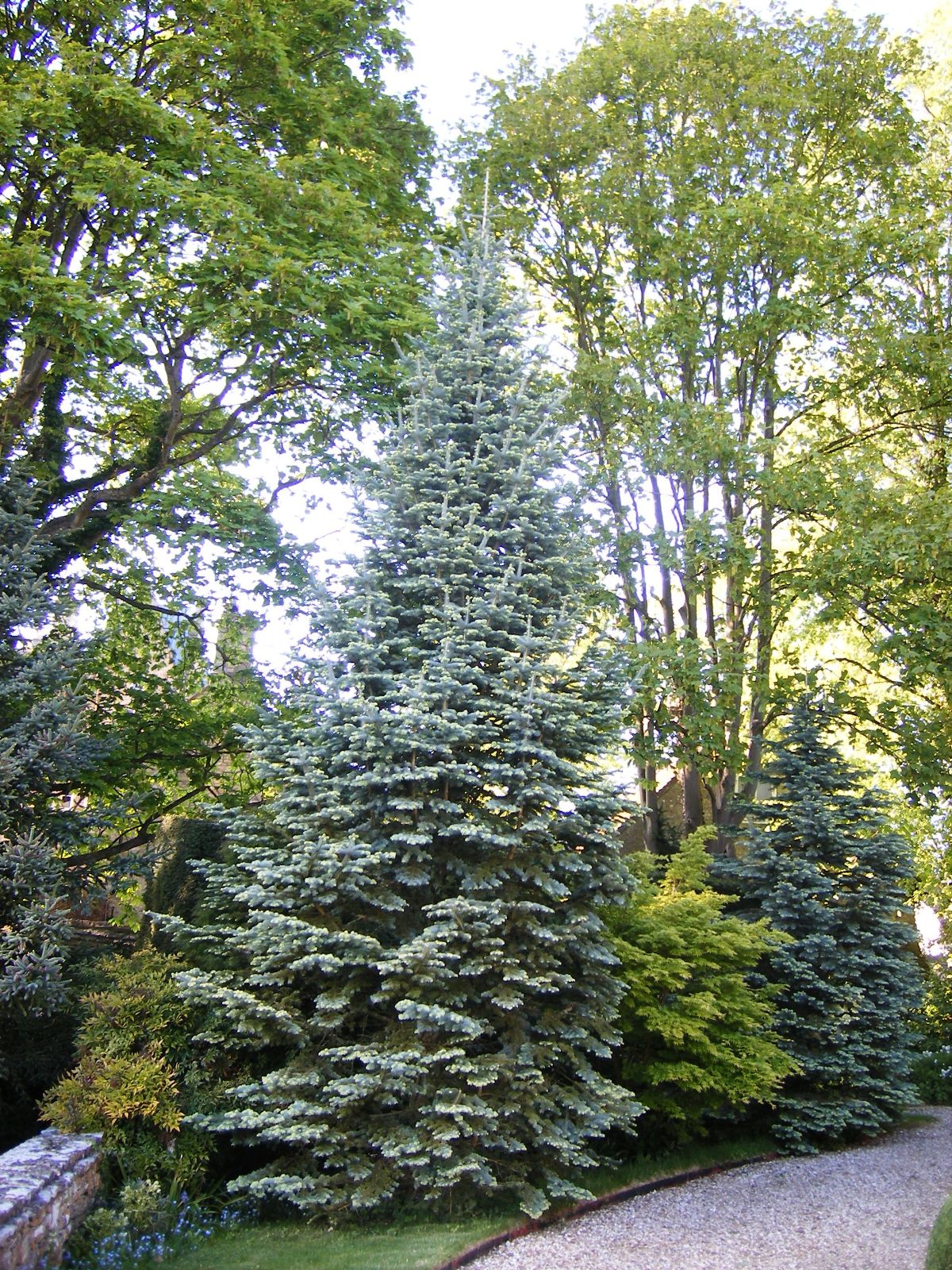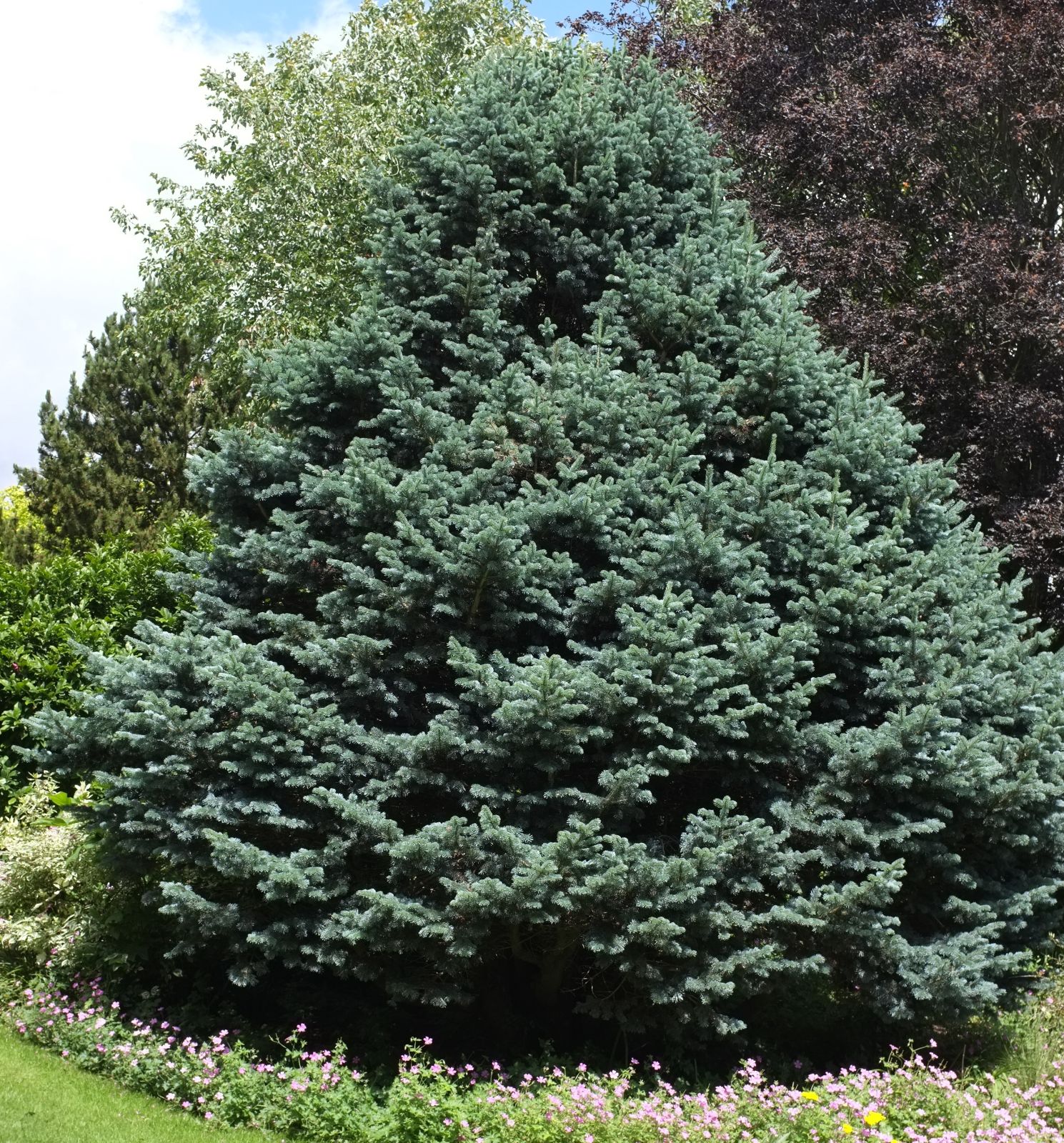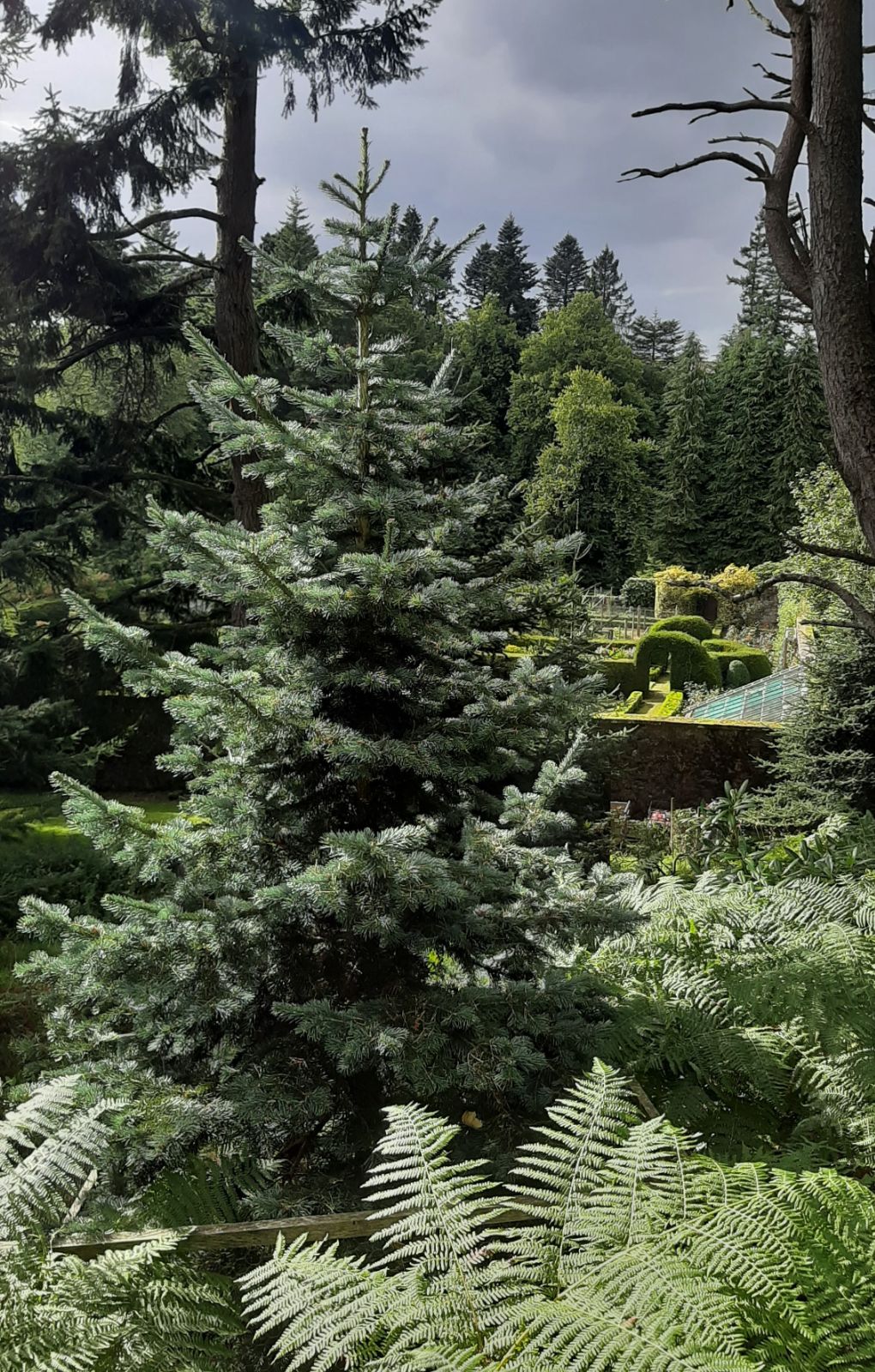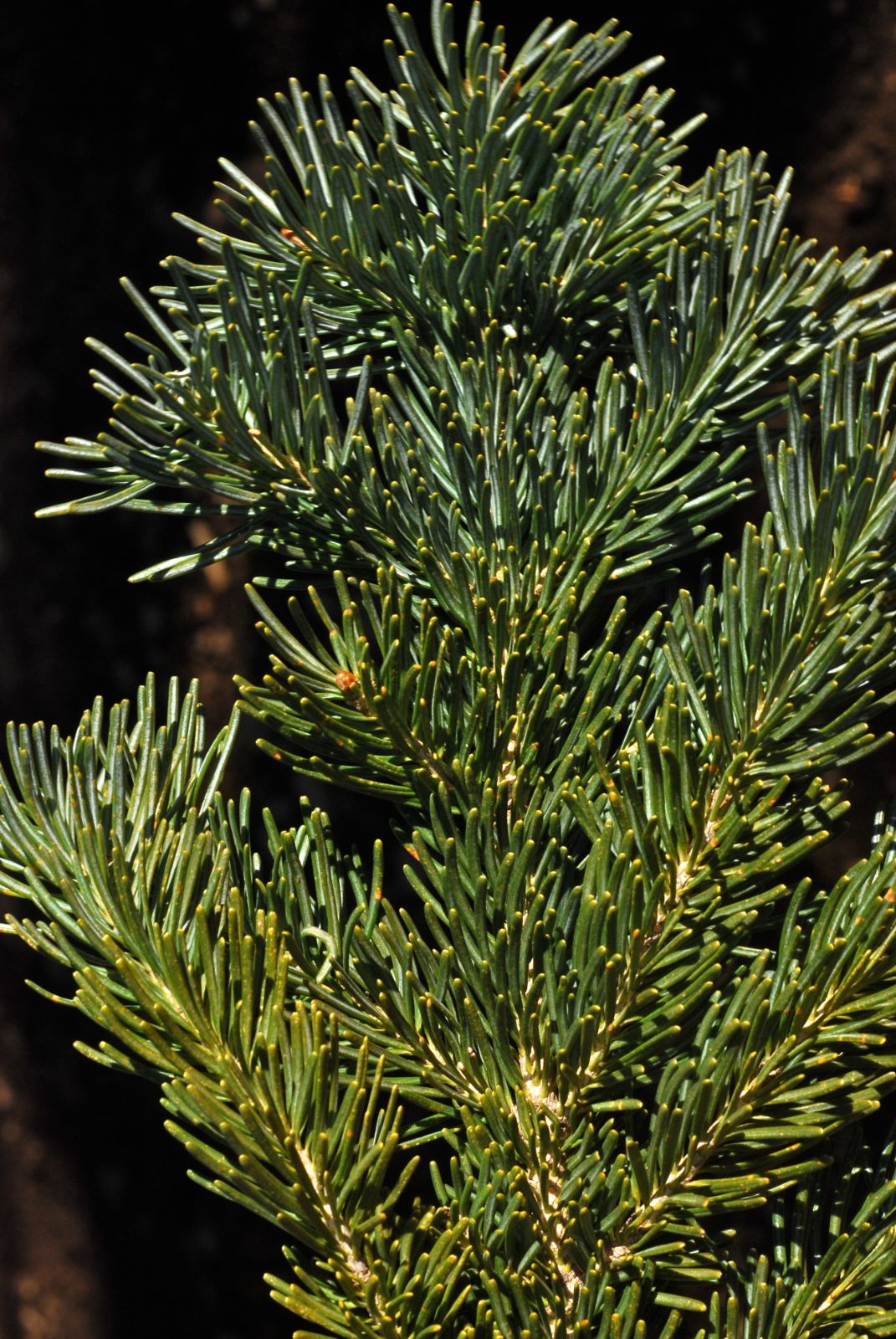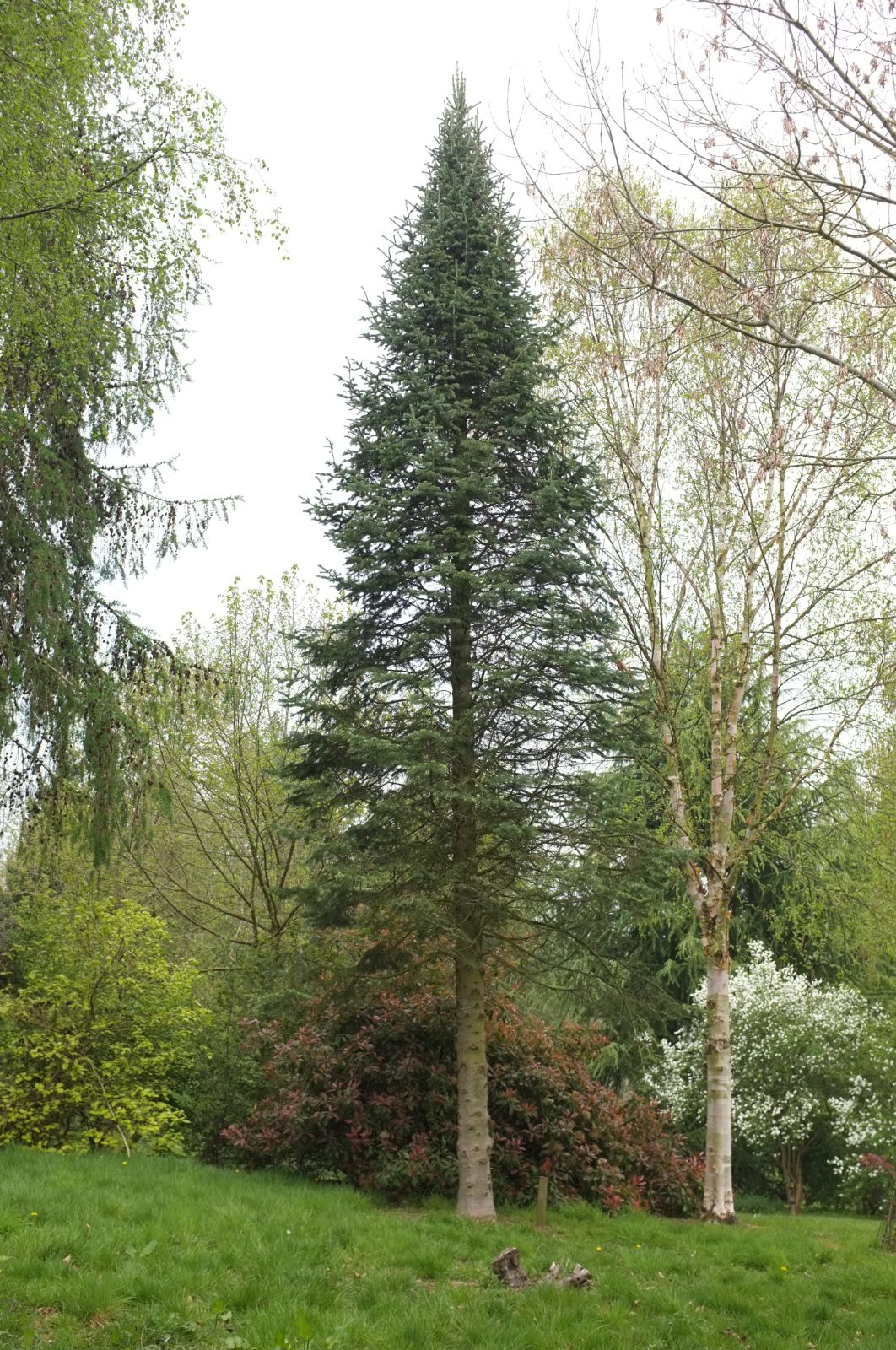Abies lasiocarpa
Sponsor
Kindly sponsored by
Sir Henry Angest
Credits
Tom Christian (2021)
Recommended citation
Christian, T. (2021), 'Abies lasiocarpa' from the website Trees and Shrubs Online (treesandshrubsonline.
Genus
Common Names
- Subalpine Fir
- Alpine Fir
- Western Balsam Fir
- Sapin Subalpin
- Westamerikanische balsamtanne
- Pino Real Blanco de las Sierras
Synonyms
- Abies bifolia A. Murray [in part]
- Abies subalpina Engelm.
Infraspecifics
Other taxa in genus
- Abies alba
- Abies amabilis
- Abies × arnoldiana
- Abies balsamea
- Abies beshanzuensis
- Abies borisii-regis
- Abies bracteata
- Abies cephalonica
- Abies × chengii
- Abies chensiensis
- Abies cilicica
- Abies colimensis
- Abies concolor
- Abies delavayi
- Abies densa
- Abies durangensis
- Abies ernestii
- Abies fabri
- Abies fanjingshanensis
- Abies fansipanensis
- Abies fargesii
- Abies ferreana
- Abies firma
- Abies flinckii
- Abies fordei
- Abies forrestii
- Abies forrestii agg. × homolepis
- Abies fraseri
- Abies gamblei
- Abies georgei
- Abies gracilis
- Abies grandis
- Abies guatemalensis
- Abies hickelii
- Abies holophylla
- Abies homolepis
- Abies in Mexico and Mesoamerica
- Abies in the Sino-Himalaya
- Abies × insignis
- Abies kawakamii
- Abies koreana
- Abies koreana Hybrids
- Abies magnifica
- Abies mariesii
- Abies nebrodensis
- Abies nephrolepis
- Abies nordmanniana
- Abies nukiangensis
- Abies numidica
- Abies pindrow
- Abies pinsapo
- Abies procera
- Abies recurvata
- Abies religiosa
- Abies sachalinensis
- Abies salouenensis
- Abies sibirica
- Abies spectabilis
- Abies squamata
- Abies × umbellata
- Abies veitchii
- Abies vejarii
- Abies × vilmorinii
- Abies yuanbaoshanensis
- Abies ziyuanensis
Tree 30–35 m × 1–1.2 m dbh. Crown narrowly conical, spire-like. Bark of young trees smooth, thin, whitish or grey; becoming thicker, creamy-white or grey, fissured and later brown or grey near the bole in older trees. First order branches densely set, short, upcurved for many years. Branchlets slender, pliable, strong, initially pale brown, later grey, shining whitish-grey beneath, prominently ridged and grooved, densely brown-pubescent. Vegetative buds globose or subglobose, 3.5–6 × 3–5 mm, very resinous. Leaves somewhat forward, those of the lower rank pectinate, longer than those above, leaves above the shoot somewhat outspreading and strongly forward, 2.5–4.5 cm × 1.5–2 mm, curved or bent at the base, apex obtuse, sometimes acute or weakly emarginate, grey-green with some stomata in a central band above, stomata in two narrow bands separated by a prominent midrib below; crushed leaves give a distinctive balsam aroma. Pollen cones crowded, pendulous, 1.5–2 cm long, yellow with purple or violet microsporophylls. Seed cones oblong-cylindrical, apex obtuse, 7–10 × 2.3–3.5 cm, purple to purple-green when immature, maturing to purplish-brown or brown; seed scales cuneate-flabellate, 1.5–2.5 × 1.3–2.3 cm at midcone; bracts included. (Farjon 2017; Debreczy & Rácz 2011; Hunt 1993).
Distribution Canada Alberta, British Columbia, Northwest Territories, Yukon United States Alaska, Arizona, California, Colorado, Idaho, Montana, Nevada, New Mexico, Oregon, Utah, Washington, Wyoming
Habitat Occurring over a vast area, from sea-level to 1500 m in the north of its range, often with Tsuga mertensiana, and from 600–3650 m in the Cascade Range and the Rocky Mountains, predominantly in the subalpine zone with Picea engelmanii.
USDA Hardiness Zone 5-6
RHS Hardiness Rating H7
Conservation status Least concern (LC)
Taxonomic note The Flora of North America account (Hunt 1993) treats ‘interior’ populations, from the eastern Yukon south along the Rockies to southern Arizona and New Mexico, as Abies bifolia, which most authors have treated as a synonym since at least the early 20th century. Hunt maintains the name A. lasiocarpa for ‘coastal’ populations, in Alaska and western Yukon southward in coastal mountain ranges to northern California. He justifies separation based on phytochemical differences, a recurring theme in his account, but the morphological differences he cites are not sufficient to warrant separation, and he acknowledges intermediate forms occurring over a large area (Hunt 1993). Most modern authors continue to treat A. bifolia in synonymy, even those with such different species concepts as Farjon (2017) and Debreczy & Rácz (2011) and the prevailing opinion is followed here.
Abies lasiocarpa occurs over a vast north-south range, characterised everywhere by long, cold winters, but differing markedly in other ways, for example: in the nature and timing of precipitation (e.g. in the subalpine zone with much precipitation as snow, cf. at lower altitudes as a minor component of the temperate rainforests of the Pacific Northwest with year-round precipitation); in the extent of summer heat (warm to hot summers in the south-eastern parts of its range cf. cool summers in the north and the Pacific Northwest). It is also found in different soil types, which may be wet or dry (Farjon 2017).
Across such an extensive range with diverse climatic conditions, ecotypes will occur that will be better suited than others to cultivation in a particular area; nevertheless, it has been subject to rather sweeping generalisations about its merits in the past; the only one that warrants repetition here is its undeniable preference for a continental climate. Although many ecotypes will occur across its vast range, even those populations with some maritime influence do not excel in maritime areas like the UK and Ireland. Bean (1976a) remarked that ‘it is an elegant, slender tree but finds our climate too soft and does not thrive’ while Rushforth (1987) notes ‘in cultivation it can be damaged by late spring frosts’. Jacobson (1996) paints a marginally better picture of it in North American gardens, saying ‘It has luxurious foliage, is fragrant, and makes a handsome narrow spire’ though he cautions that like its eastern cousin A. balsamea it is usually short lived, and he suggests var. arizonica is more adaptable and consequently a better choice.
Sudworth (1916) conjectures that it would have originally been ‘discovered’ by Lewis and Clark in September 1805 when they crossed the Bitteroot Mountains, but it wasn’t brought to scientific attention until David Douglas collected a specimen in 1832. Quite when it was introduced to cultivation is less clear. Sudworth (1916) says that Parry distributed seed collected in the Rockies in 1863 but adds ‘there appears to be no record of trees raised from this seed’. He goes onto say that ‘probably the first trees known in cultivation were grown from seed planted in 1873 in the Arnold Arboretum…it seems to have been introduced to England in about 1890’ (Sudworth 1916). Jacobson, on the other hand, suggests ‘It was introduced to cultivation when D. Lyall sent seed to England in 1863’ (Jacobson 1996), but he offers no reference for this information. Elwes and Henry described it but did not discuss it, while Mitchell (1972) noted only a handful of small examples. Curiously, Sudworth also mentions that the German government imported seed in the early 1890s and that ‘trials show the tree to be better adapted to the climate of Germany than that of England’ (Sudworth 1916).
There are scant current records of examples growing in continental Europe, though it is likely to be a better grower here than in the maritime climate to be found along the Atlantic seaboard. It is grown at Hørsholm, Denmark (Hansen 2017) while a tree in the Arboretum Poort Bulten in the Netherlands was 24 m × 0.85 m dbh when measured in 2010 (monumentaltrees.com). The largest on record in the UK and Ireland is a tree of 20 m × 0.56 m dbh (in 2018) at RHS Garden Harlow Carr, Harrogate, North Yorkshire, with others approaching this in forest plots at Kilmun, Argyll, and at Brechfa, Carmarthenshire. (Tree Register 2020). Recent decades have seen a number of introductions to the UK from the wild which, based on locality, may be confidently assigned to var. lasiocarpa, and many of these are showing promise, being healthy specimens of steady albeit slow growth. These include: Warner & Howick 396, from Mt Rainier National Park, Washington, making fine trees at Dawyck and Howick; Paterson & Clarke 42, from Crater Lake, Oregon, making fine trees at Dawyck; Howick & McNamara 1777, from Olympic National Park, Washington, making fine trees at Cragside and Howick. Material of the latter collection was also distributed to Cawdor Castle, Nairn, but did not survive there.
Additionally, various seed lots were received from the Canadian Forestry Service by the Royal Botanic Garden Edinburgh (RBGE) in 1995 and the resulting plants distributed to collections including Dawyck and Cragside. They have thrived in both locations, and perhaps in the case of the three collections cited above there is something to be said for having selected material of coastal populations in the Pacific Northwest, rather than from the interior. Indeed, the planting at Cragside is remarkable in the uniform health and vigour of the specimens, laid out by retired head forester Ian Fletcher who, in partnership with the RBGE’s International Conifer Conservation Programme, established some truly remarkable groves of species there including probably the largest stands planted in recent times of Picea breweriana and Tsuga mertensiana (pers. obs. 2008, 2018). In August 2018 the largest A. lasiocarpa at Cragside were 10 m × 0.17 m dbh after c. 19 years in the ground. Of course, their current good health is no guarantee that they will survive into old age, but they provide cause for cautious optimism and further experimentation. This might be facilitated by more recent gatherings, made from multiple locations in British Columbia in 2016 on a joint expedition of the RBGE and the Howick Arboretum. These collections bear the codes and numbers EHBC 72, 74, 116 and 153. It will be interesting to follow their progress.
Although many cultivars are registered (Auders & Spicer (2012) list well over 30) the majority are variations on a theme: dwarf or extreme dwarf selections of more or less globular habit, differentiable only by the keenest specialists. Only those very few that offer something truly different are treated here.
'Argentea'
Probably a selection of var. arizonica, this forms a neat, small, conical tree of dense growth with strikingly blue leaves, to 3 × 1 m in ten years. Selected from the wild before 1901 (Auders & Spicer 2012). ‘Compacta’ is similar, but slower and bluer; ‘Kenwith Blue’ is similar yet again, and probably an improvement on ‘Compacta’.
'Compacta'
Though its name suggests a small stature ‘Compacta’ is certainly not a dwarf: it ultimately forms a large shrub or small tree of slow, compact growth, eventually several meters tall and broad. There is a superb example at the Dawes Arboretum in Ohio (Hatch 2021–2022).
'Conica'
Barely distinct in its description from the likes of ‘Argentea’, ‘Compacta’, and ‘Kenwith Blue’, it is treated here on account of its pedigree: it was selected at the Arnold Arboretum from the batch of seed sent from Colorado by Parry in 1873 (Auders & Spicer 2012).
Dwarf Cultivars
The following selections typically remain below 1 m after ten years, and most are also characterised by very slow growth. Most are the domain of specialist growers, but the more widely available ones have a place on the rock or scree garden in suitable climates.
- ‘Beano Broom’ As its name suggests, this selection was propagated from a witches broom and forms a small bun, to just 30 × 40 cm after ten years.
- ‘Beissneri’ Raised in Germany before 1901, this is a dwarf selection with a proportion of leaves sickle-shaped and twisted, revealing their white undersides.
- ‘Cvikov’ An extreme dwarf of compact, spreading habit, to 20 × 50 cm after ten years. It was raised from a witches’ broom found in Czechia before 2004.
- ‘Day Creek’ (‘Witches’ Broom’) Introduced by the Wells Nursery, Washington, this dwarf selection forms a conical plant of moderate vigour, to 60 × 45 cm in ten years.
- ‘DuFlon’ (‘Duflon’) One of the smallest Abies cultivars known, this miniscule plant may remain below 15 ×15 cm after ten years. It was propagated from a wild tree, discovered near Lake Cushman on Washington’s Olympic Peninsula by A. DuFlon in 1954. It was introduced to commerce by Lohbrunner.
- ‘Green Globe’ A small, slow growing plant of globose habit, and needles much greener than is typically the case. To 75 × 75 cm in ten years.
- ‘Hans Christa’ Raised in Germany before 2006 by J. Kohout, Auders & Spicer describe this as a ‘choice’ dwarf of very slow growth, to 20 × 20 cm in ten years.
- ‘Joe’s Alpine’ A compact dwarf characterised by a high proportion of upright shoots. To 30 × 30 cm in ten years.
- ‘Kyle’s Alpine’ An extreme dwarf to 30 × 30 cm in ten years. Introduced by the Stanley & Sons nursery in Oregon c. 2009.
- ‘Logan Pass’ (‘Glacier’) A conical dwarf propagated from a witches’ broom found on a wild tree near Logan Pass, USA, in 1976. To 40 × 25 cm in ten years.
- ‘Lopalpun’ A selection of very compact growth, developing into a low mound that grows wider than tall. To 25 × 40 cm in ten years.
- ‘Mulligan’s Dwarf’ Raised as a seedling in the US c. 1979, this selection forms a small, globose bush of upright habit, to 75 × 75 cm in ten years.
- ‘Prickly Pete’ Propagated from a plant found in the USA during the 1990s, this rather charming selection forms a columnar dwarf tree with typical (i.e. disproportionately long) leaves.
- ‘Stanley’ Raised in the early 2000s by the Stanley & Sons Nursery of Oregon, this blue-leaved selection forms a compact bun to 30 × 30 cm in ten years.
- ‘Steven’s Blue’ Another introduction by Stanley & Sons Nursery of Oregon, this is very like ‘Stanley’ but with leaves more vividly blue.
- ‘Toenisvorst’ (‘Tonismeyer’; ‘Meyer’) A small, pyramidal to globose plant of rather irregular growth, to 50 × 40 cm after thirty years. It is distinguished by its dark green needles which are atypical for the species: Auders & Spicer say it was raised from a seedling in a German collection, so an open-mind should be kept as to its true parentage.
- ‘Utah’ A miniscule bun of extremely slow growth, ultimately forming a very small, flat-topped mound.
'Kenwith Blue'
A remarkably robust selection raised in the UK by Don Hatch during the 1970s. It forms an upright, pyramidal tree of modest growth, to 1.5 × 0.8 m after ten years. It is set apart by its vividly blue leaves which are retained on branches until they are fully shaded out (Auders & Spicer 2012).
'Martha's Vineyard'
This selection was raised at the Polly Hill Arboretum, MA. It forms a compact, pyramidal tree of moderate growth, to 1.5 m in ten years (Auders & Spicer 2012).
'Pendula'
Selected in cultivation in modern Czechia c. 1909, this selection reportedly grows to the same size as normal forms of the species, but has remarkably pendulous branches (Auders & Spicer 2012).
var. arizonica (Merriam) Lemm.
Common Names
Arizona Fir
Corkbark Fir
Arizona Subalpine Fir
Sapin Liége
Sapin d'Arizona
Arizonatanne
Korktanne
Synonyms
Abies arizonica Merriam
Abies bifolia var. arizonica (Merriam) O'Kane & K.D. Heil
Abies lasiocarpa subsp. arizonica (Merriam) E. Murray
Bark conspicuously corky even on young trees, maturing from grey-green with pinkish fissures to creamy or pale yellow-white to yellowish or whitish-grey; widely fissured toward the base of mature trees. Branchlets pale yellowish-grey. Leaves more prominently glaucous and with broader stomatal bands than in the type. (Farjon 2017; Debreczy & Rácz 2011; Mitchell 1972).
Distribution
- United States – Arizona, Colorado, New Mexico
RHS Hardiness Rating: H6
USDA Hardiness Zone: 5-6
Taxonomic note The Flora of North America account suggests that the var. arizonica ‘should probably be a segregate of A. bifolia, not A. lasiocarpa’ (Hunt 1993) though this treatment is seldom followed. See the taxonomic note under A. lasiocarpa for further discussion.
A southern vicariant of the type found at high altitude in the southern Rocky Mountains, the Corkbark Fir is so-named for its thick, corky, yellowish or whitish-grey bark as a mature tree. Its needles also have broader stomatal bands below, and the central band of stomata above is much more prominent than in the type, giving var. arizonica foliage a much more glaucous hue and aiding its identification. It entered cutlivation when Dr. Purpus introduced it to the Darmstadt Botanic Gardens, Germany, in about 1900 (Jacobson 1996). It was cultivated in the eastern United States by 1901 when it was offered for sale by Pinehurst Nurseries in North Carolina, and stocked by Moser’s Nursery at Versailles by 1903 (Elwes & Henry 1906–1913), the same year it arrived in Britain (Bean 1976). Various authors on both sides of the Atlantic have noted that it is superior to the type in cultivation, Jacobson (1996) calling it ‘a more adaptable, and prettier version’. Mitchell (1972) said it forms ‘a neat, narrow tree, much more healthy than the type’ and likened the narrow spire-like crown to that of Picea omorika.
Nevertheless it remains rare and somewhat under-represented, with few if any introductions to collections having been made in recent years. There is a tree of unknown height × 0.41 m dbh (in 2019) at the Pinetum Blijdenstein in the Netherlands. Mitchell (1972) gave the best tree as ‘a fine dark blue spire’ 18 m × 0.48 m dbh at Highclere, Hampshire, a measurement presumably considerably older than that publication, for the same tree had increased to 23 m × 0.48 m dbh by 1978 – an impossible rate of growth for this species, and indeed for most others. Mitchell further noted three with ‘candelabra crowns’ from 15–17 m at Hergest Croft, Herefordshire. The Hergest trees are long since gone, apparently so too the Highclere tree, for The Tree Register now assigns champion status to a tree growing in a private garden in North Yorkshire, 17 m in 2019 (Tree Register 2020).
Bean (1976) hinted at, and inadvertently caused, some confusion in his discussion of this taxon when he said ‘the name A. lasiocarpa is sometimes used erroneously for A. concolor var. lowiana’. No evidence of this confusion between scientific names could be found, and the two species would be quite difficult to confuse, but the common name ‘Corkbark Fir’ is sometimes applied to A. concolor var. lowiana, and this is likely what Bean was referring to.

